Advancing age is the enemy none want to face and none can defeat. There are, however, several healthy ways to slow down the effects of aging on our minds and body. Yoga is one of the oldest ways to shape a robust physique and maintain good mental health. One of the many advantages of practicing Yoga is that you can retain your youth for a relatively long time without compromising your health. (CLICK HERE to know more)
Yoga builds a robust physique, a sharp mind, and a lively spirit to prevent aging for as long as possible.
Let us study five Yoga postures that enhance your youth and increase your longevity with their holistic action on your mental and physical well-being.
- Hastapadasana
Hasta means hands, and Pada means feet. Hastapadasana is a forward-bending Yoga posture that brings your hands and feet closer to one another. Hastapadasana plays a crucial role in toning the abdominal and leg muscles.
To perform Hastapadasana
- Stand on the floor with your back erect and your shoulders taut, and relax your limbs in a neutral pose.
- Keep your feet close to each other and elevate your arms while inhaling deeply.
- Exhale gradually while bending forward from your waist till your fingers touch the floor.
- Allow your head to drop down naturally so that it rests between your shins. Press your feet firmly against the ground and balance your body weight equally on both feet.
- Press your palms firmly against the floor, or grasp your ankles or shins with your hands.
- Remain in Hastapadasana for 20-30 seconds before relaxing your body. Continue regular breathing cycle throughout the asana.
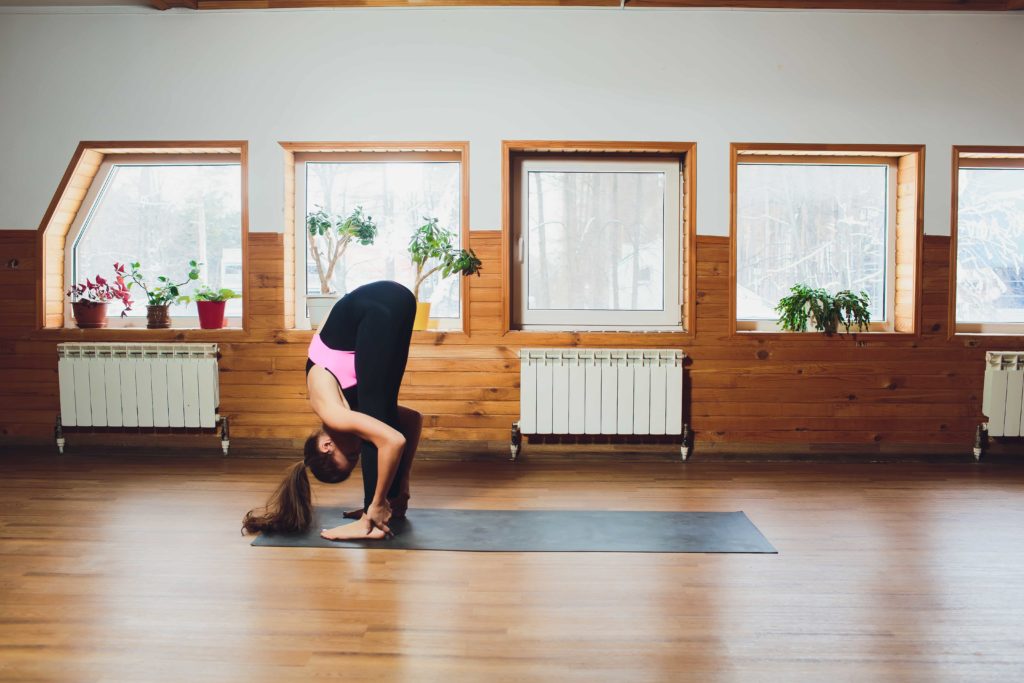
Hastapadasana actively rejuvenates the nervous system and retains robust cognitive capacity. The Yoga posture keeps your metabolism functioning optimally due to its effect on digestive functions. When practiced regularly, Hastapadasana restores the youthfulness of your mind and body.
- Urdhva Hastsana
Urdhva Hastasana, which also goes by the name ‘Upward salute,’ derives its name from your physique’s posture while performing the asana. Urdhva Hastasana is a standing Yoga posture that tones your core and limb muscles.
To perform Urdhva Hastasana
- Stand with your spine erect, your shoulders rolled back towards each other, and your gaze fixed in the front.
- The tips of your big toes must be touching, and your heels must point slightly away from one another.
- Stretch your arms upward while keeping them parallel to each other. Your fingers must point toward the ceiling, and your palms must face one another.
- Remember to stretch your trunk adequately during Urdhva Hastasana while balancing your weight on both feet.
- Remain in Urdhva Hastasana for 20-30 seconds before relaxing your body.
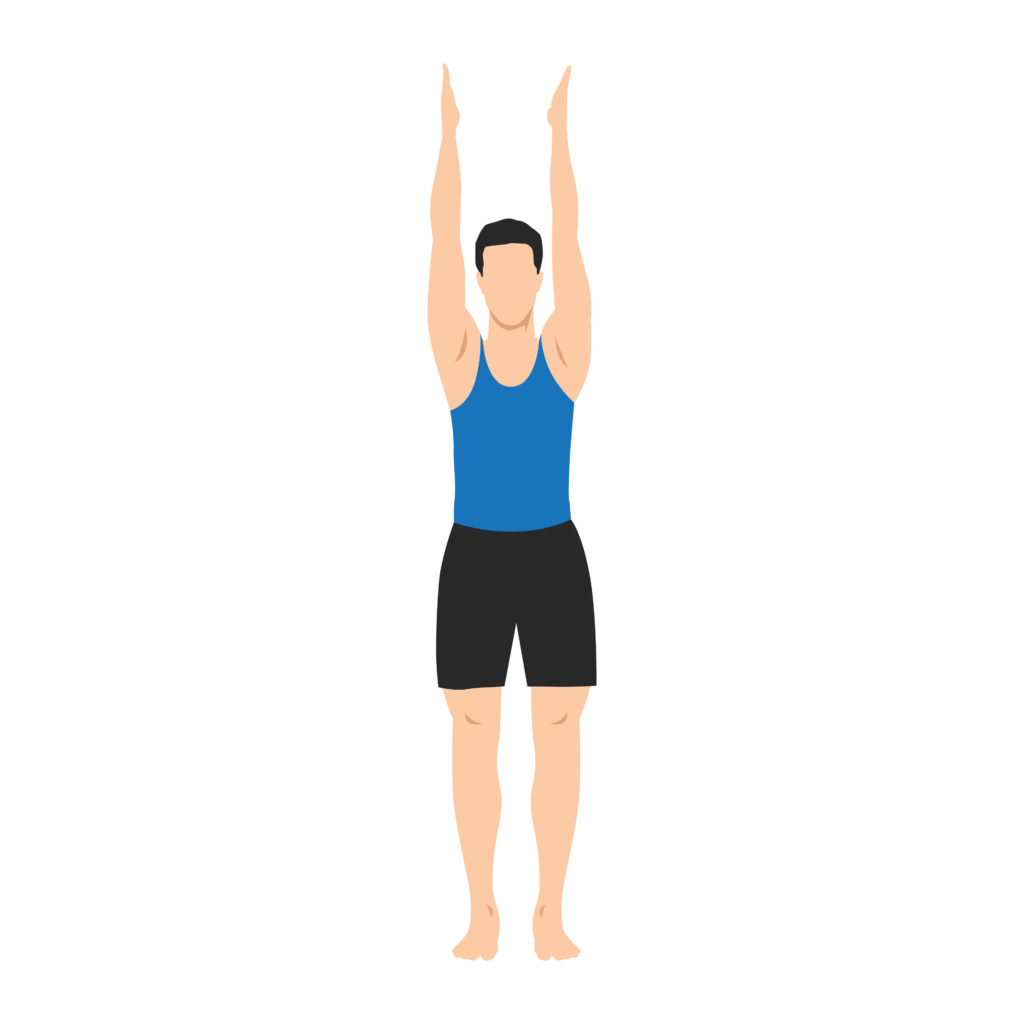
Urdhva Hastasana stretches and tones your abdominal muscles and arms. Practicing the Yoga posture is a great way to stimulate your lungs to function more efficiently. Urdhva Hastasana helps to beat anxiety, mental fatigue, and the ill effects of stress.
- Matsyasana
Matsya is a Sanskrit word that means fish, and asana means posture. Matsyasana derives its name from the fish-like pose your body assumes while performing the Yoga posture.
To perform Matsyasana
- Lie down on a firm, flat surface with your knees bent. Place your arms at the side of your body.
- Lift your buttocks slightly and place your hands underneath to cushion your buttocks.
- Press your palms and forearm firmly against the floor and gently elevate your chest, shoulders, neck, and head.
- Let your head hang back, so its top is in contact with the floor, and your neck forms an arch.
- Straighten out your legs and stretch them straight ahead.
- Continue regular breathing during Matsyasana.
In the advanced version of Matsyasana, one can cross their legs to stretch their spine a little more.
BASIC LEVEL
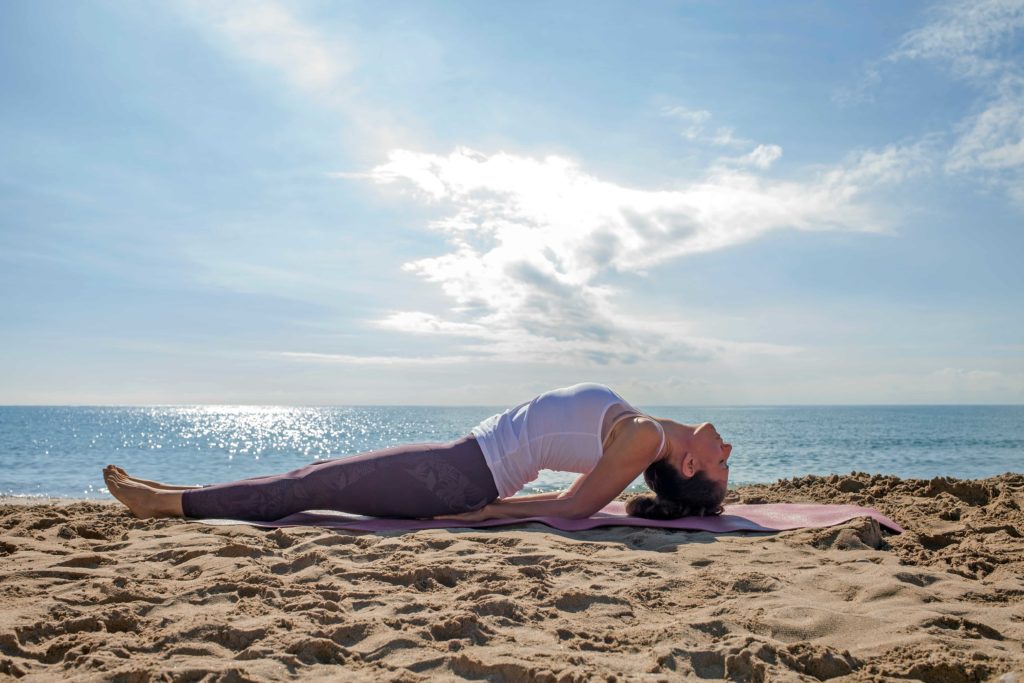
ADVANCED LEVEL
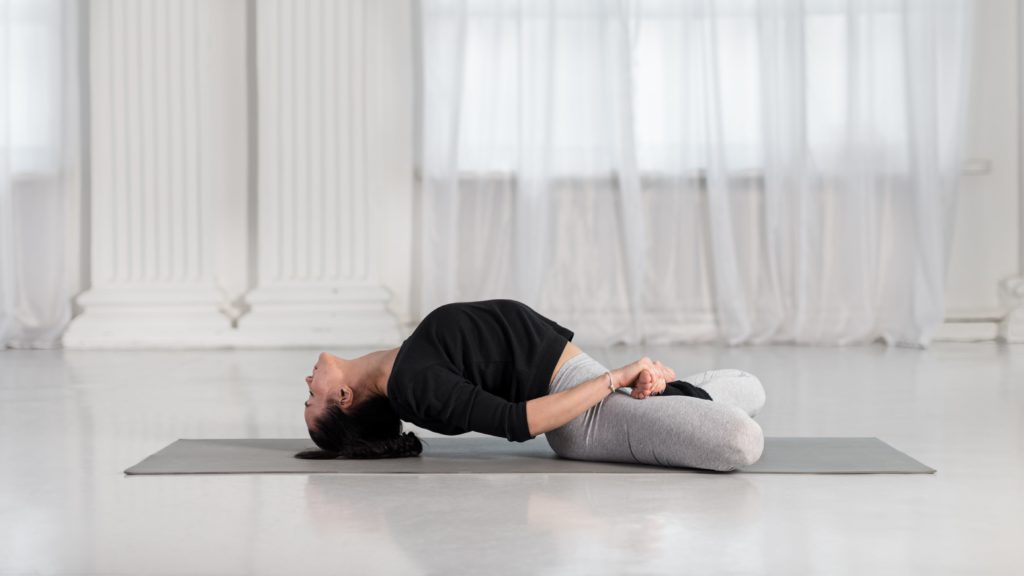
The Fish pose stimulates your thyroid functions, thus regulating your hormonal cycle. The Yoga pose also regulates your blood pressure and sleep cycle to preserve your health. Matsyasana prevents premature aging by keeping your cardiac system in good health.
- Dandasana
Dandasana, or the staff pose, derives its name from the ramrod posture one assumes while performing the asana.
To perform Dandasana
- Sit on the floor and straighten your legs in the front while keeping your thighs in close contact.
- Join the tips of both great toes and spread your heels slightly apart without inverting your ankles. Keep your feet perpendicular to the ground.
- Straighten your arms, touch your palms to the floor, and bring your shoulder blades close to each other.
- Arch your feet so that the toes curl backward without bending your ankles.
- Press your thighs and calves firmly against the ground and look straight ahead.
- Relax your limbs and spine after remaining in Dandasana for 20-30 seconds.
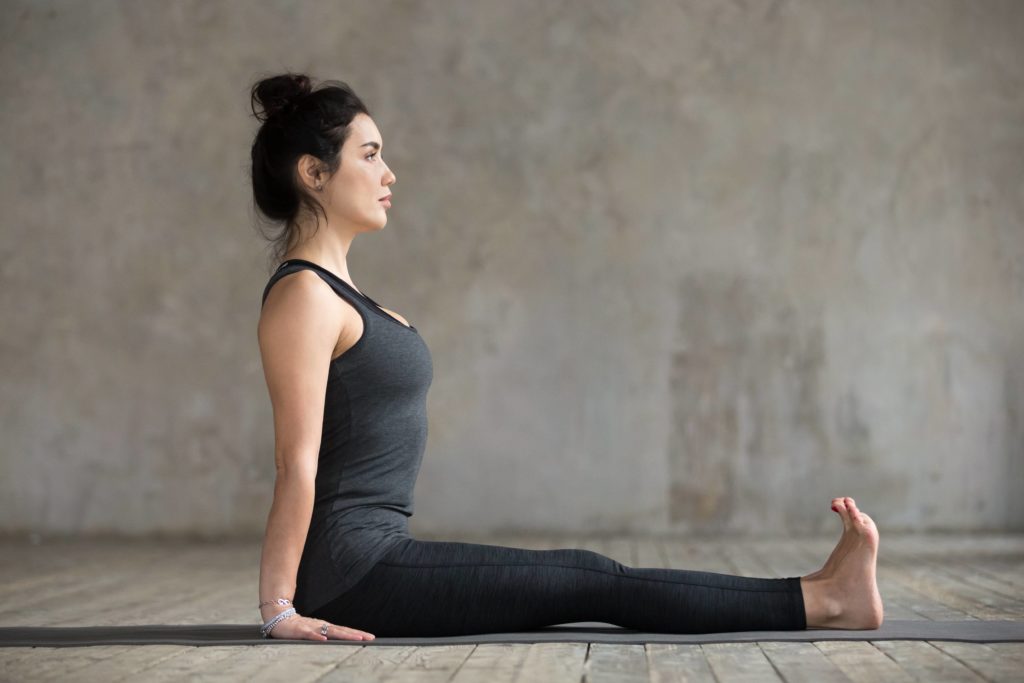
Dandasana may seem like an easy Yoga pose, but it stretches and tones almost all your body muscles. Dandasana lets your body remain young by improving muscle strength and spinal posture.
- Chakrasana
Chakrasana, or the wheel pose, is a backward-bending Yoga pose that charges your brain cells and retains its youthful vigor. Your body assumes the shape of a half-wheel while performing the asana.
- Lie down with your back, neck, head, and limbs resting on a flat, firm surface.
- Bend both knees together and press your feet firmly against the floor. Keep your knees away from one another to give your body a firm base.
- Bend your elbows, raise them backward, and place your palms on the floor next to the corresponding shoulder.
- Gently elevate your head, neck, torso, and limbs off the floor. Allow your head to hang back naturally without stressing your neck.
- In the final pose of Chakrasana, balance your body weight equally on your feet and palms.
- Remain in Chakrasana for 5-10 breath counts before relaxing your body.
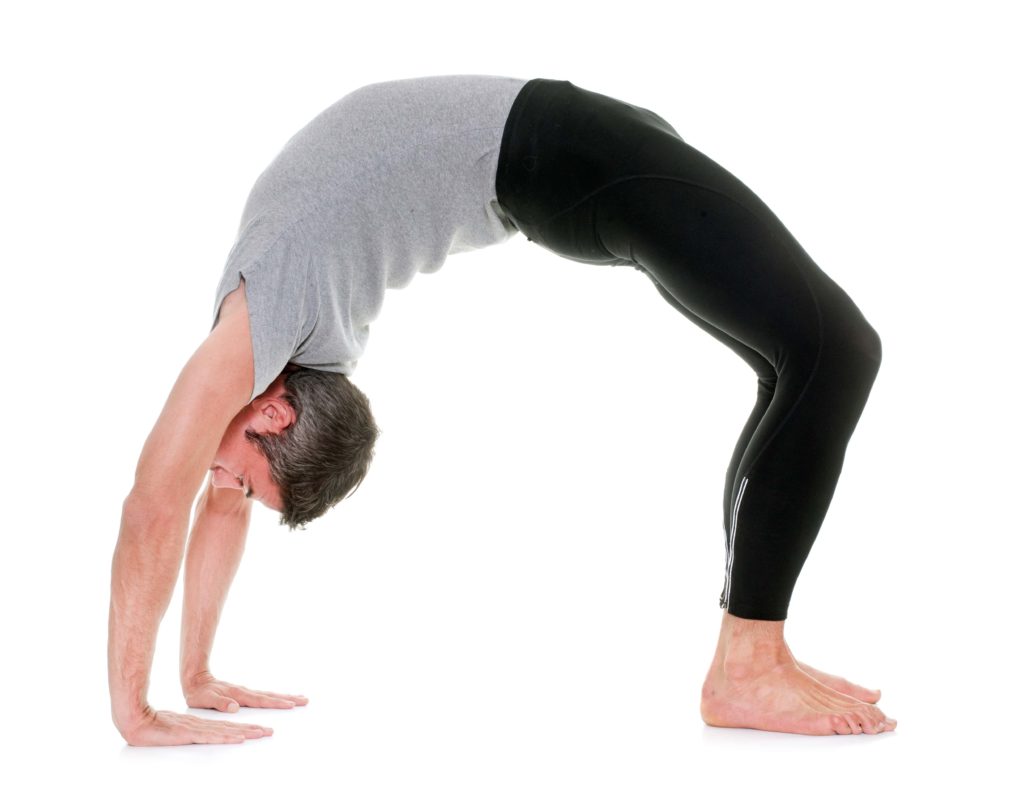
Chakrasana stretches your abdominal cavity, allowing your digestive organs to function more efficiently. Regular practice of Chakrasana is a great way to boost your metabolism and feel young every day. Chakrasana also controls your brain functions and increases your physical and mental stamina.
Aging is a natural physiological phenomenon that we cannot avoid altogether. However, with the above Yoga asanas and other techniques like meditation, your youth can last for a longer time.
Precautions And Contraindications
Yoga is a tried and tested way of living a healthy and happy life. Many people have turned to Yoga to maintain their overall well-being, improve their health, or curb existing illnesses. While Yoga has immense benefits for your physical, spiritual, and psychological health, not everyone can practice every Yoga technique.
Here are some restrictions one must follow before and during a Yoga session.
- Each Yoga pose is unique and affects different organs of your body. Know your Yoga asanas well before you practice them.
- The best way to learn Yoga is under the guidance of a certified and experienced Yoga trainer.
- Please discuss with your physician any existing physical ailments and their possible aggravation due to Yoga practice.
- Seek immediate medical assistance if you experience any physical discomfort, pain, or other symptoms while performing any Yoga posture.
- Specific Yoga postures are contraindicated during pregnancy, menstruation, or during specific ongoing illnesses. Discuss your health issues in detail with your Yoga trainer to avoid inconvenience.
- The best way to avoid physical fatigue or exercise injuries while practicing Yoga is to be consistent with your practice and know your limits. (READ about the various ways to prevent injuries while performing Yoga)
Yoga is a sure shot to successfully retain your youthful vigor for longer. It is also crucial to focus on a healthy diet and a balanced lifestyle to complement the positive effects of Yoga on your health.
Despite best efforts, nobody has defied Nature’s laws to stay youthful forever. Old age is one of the most beautiful chapters of life when you can still enjoy a healthy lifestyle.
CLICK HERE to learn how Yoga helps to maintain robust health during old age.








